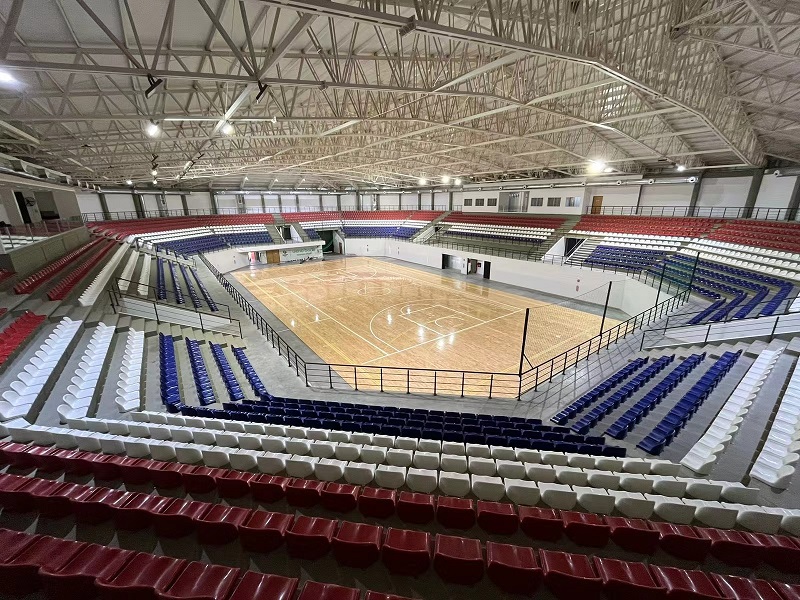
2025-07-16 17:05 Clicks:33
Here’s a well-rounded guide to sports hall flooring, covering top materials, performance features, and fitting use cases:
Ideal for: Competitive basketball, volleyball, badminton, multi-use sports halls
Benefits: Excellent ball bounce, shock absorption, longevity (>20 years), professional aesthetics
Specs: Often installed over cushioned subfloor (LVL battens + rubber pads) for safety and bounce consistency
Maintenance: Requires refinishing every 8–10 years; sensitive to humidity—best in climate-controlled venues

Ideal for: Multi-sport halls, gymnasiums, fitness areas
Advantages: Seamless, durable surface with strong shock absorption, easy cleaning, and color customization
Drawbacks: Less natural bounce than wood; premium price tag
Ideal for: Recreational gyms, dance studios, temporary courts
Pros: Affordable, moisture-resistant, available in wood grain designs
Cons: Requires subfloor, not refinishable, may feel different than hardwood in rebound and traction
Ideal for: Weight rooms, fitness areas, multi-use zones
Pros: High shock absorption, slip resistance, durable, easy maintenance
Cons: Not optimal for ball sports—bounce and roll differ; asphalt-like feel
Ideal for: Industrial and institutional sports halls (e.g., college campuses)
Pros: Seamless, durable, low maintenance, chemical/stain resistant
Cons: Hard surface, lower shock absorption, slippery if not textured
These systems—whether topped with wood, vinyl, or marley—provide cushioning, energy return, and injury prevention for dance, gymnastics, and high-impact sports
| Flooring Type | Bounce & Play Feel | Shock Absorption | Install Cost | Maintenance | Best For |
|---|---|---|---|---|---|
| Hardwood Maple | ★★★★★ | ★★★★☆ | High | Moderate–High | Competitive sports & multi-use halls |
| Polyurethane | ★★★★ | ★★★★☆ | Mid–High | Low–Medium | Multi-sport, fitness arenas |
| Vinyl | ★★★ | ★★★ | Moderate | Low | Recreational gyms, studios |
| Rubber | ★★ | ★★★★★ | Mid | Low | Weight rooms, drop zones, high-traffic areas |
| Epoxy | ★★ | ★★ | Mid | Low | Institutional or industrial sports halls |
| Sprung Subfloor | — | ★★★★★ | High | High | Dance, gymnastics, performance venues |
For elite sports play (basketball & volleyball): go with engineered hardwood over sprung subfloor—it ensures the best bounce, safety, and prestige.
For multi-use or general-purpose spaces: polyurethane offers seamless durability and ease of care; vinyl and rubber serve well in light-use or weight areas.
For dance or gymnastics: use sprung systems (wood or vinyl top) to protect joints and enhance performance.